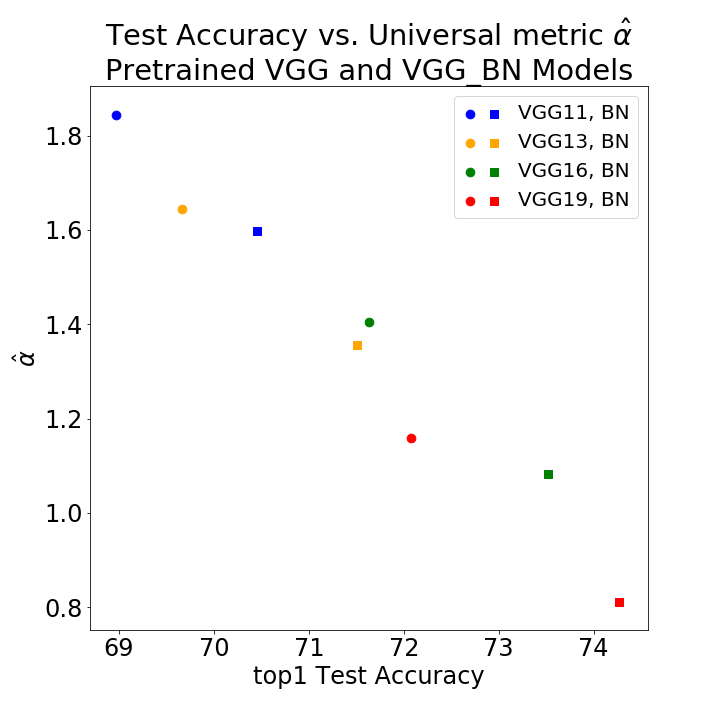Traditional and Heavy-Tailed Self Regularization in Neural Network Models
Random Matrix Theory (RMT) is applied to analyze the weight matrices of Deep Neural Networks (DNNs), including both production quality, pre-trained models such as AlexNet and Inception, and smaller models trained from scratch, such as LeNet5 and a miniature-AlexNet. Empirical and theoretical results clearly indicate that the empirical spectral density (ESD) of DNN layer matrices displays signatures of traditionally-regularized statistical models, even in the absence of exogenously specifying traditional forms of regularization, such as Dropout or Weight Norm constraints. Building on recent results in RMT, most notably its extension to Universality classes of Heavy-Tailed matrices, we develop a theory to identify \emph{5+1 Phases of Training}, corresponding to increasing amounts of \emph{Implicit Self-Regularization}. For smaller and/or older DNNs, this Implicit Self-Regularization is like traditional Tikhonov regularization, in that there is a `size scale' separating signal from noise. For state-of-the-art DNNs, however, we identify a novel form of \emph{Heavy-Tailed Self-Regularization}, similar to the self-organization seen in the statistical physics of disordered systems. This implicit Self-Regularization can depend strongly on the many knobs of the training process. By exploiting the generalization gap phenomena, we demonstrate that we can cause a small model to exhibit all 5+1 phases of training simply by changing the batch size.
PDF Abstract

 MNIST
MNIST